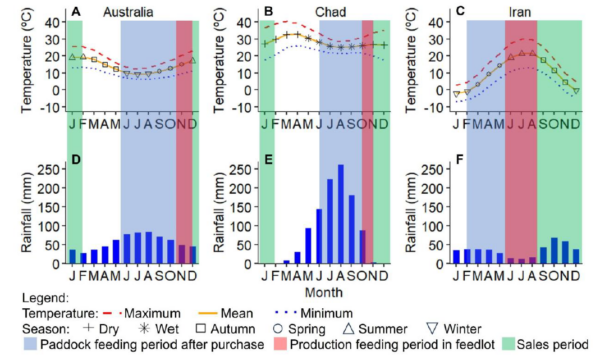UTAS researchers have examined the potential benefits of agrivoltaic systems in three countries and found the technology can most improve agricultural productivity in arid and semi-arid regions.
The study by the UTAS School of Engineering and the Tasmanian Institute of Agriculture (TIA) examines how solar panel sunlight interception affects soil moisture, drought resilience, electricity generation, and agrifood production in Australia, Iran, and Chad. The study urges policymakers to incentivize agrivoltaic system deployment in arid regions by attracting public and private investment.
The group's research paper, “Agrivoltaics as an SDG Enabler: Trade-Offs and Co-Benefits for Food Security, Energy Generation and Emission Mitigation,” examines the potential of agrivoltaics to provide a viable solution for achieving sustainable development goals (SDGs).
Prof. Matthew Harrison said in a LinkedIn post that the researchers found diminishing annual rainfall boosts benefits from electricity generation and agriculture.
“In these cases, solar panels shade soil, prevent evapotranspiration and improve pasture production, suggesting that agrivoltaics would be more beneficial in regions with greater aridity,” Harrison said. “We suggest that agrivoltaics provide scope for economic growth and climate action regardless of socio-economic development status.”

To continue reading, please visit our pv magazine Australia website.
This content is protected by copyright and may not be reused. If you want to cooperate with us and would like to reuse some of our content, please contact: editors@pv-magazine.com.


By submitting this form you agree to pv magazine using your data for the purposes of publishing your comment.
Your personal data will only be disclosed or otherwise transmitted to third parties for the purposes of spam filtering or if this is necessary for technical maintenance of the website. Any other transfer to third parties will not take place unless this is justified on the basis of applicable data protection regulations or if pv magazine is legally obliged to do so.
You may revoke this consent at any time with effect for the future, in which case your personal data will be deleted immediately. Otherwise, your data will be deleted if pv magazine has processed your request or the purpose of data storage is fulfilled.
Further information on data privacy can be found in our Data Protection Policy.